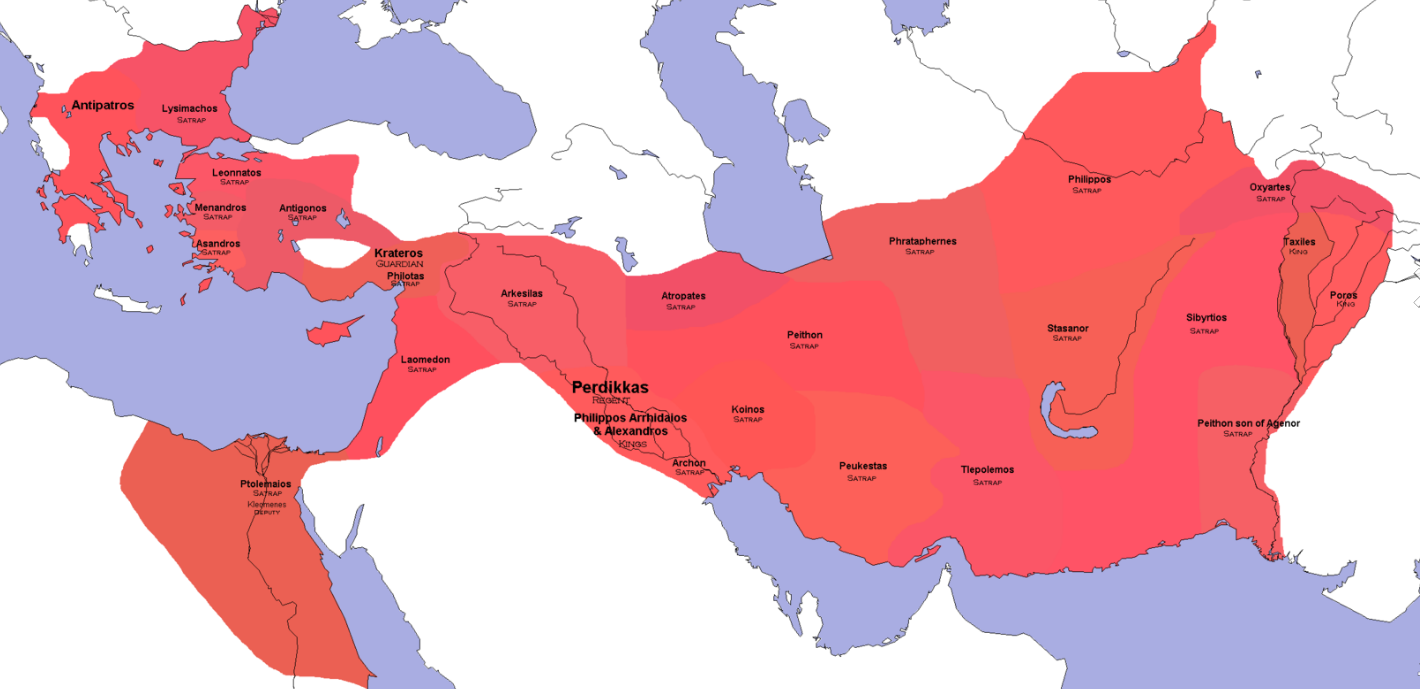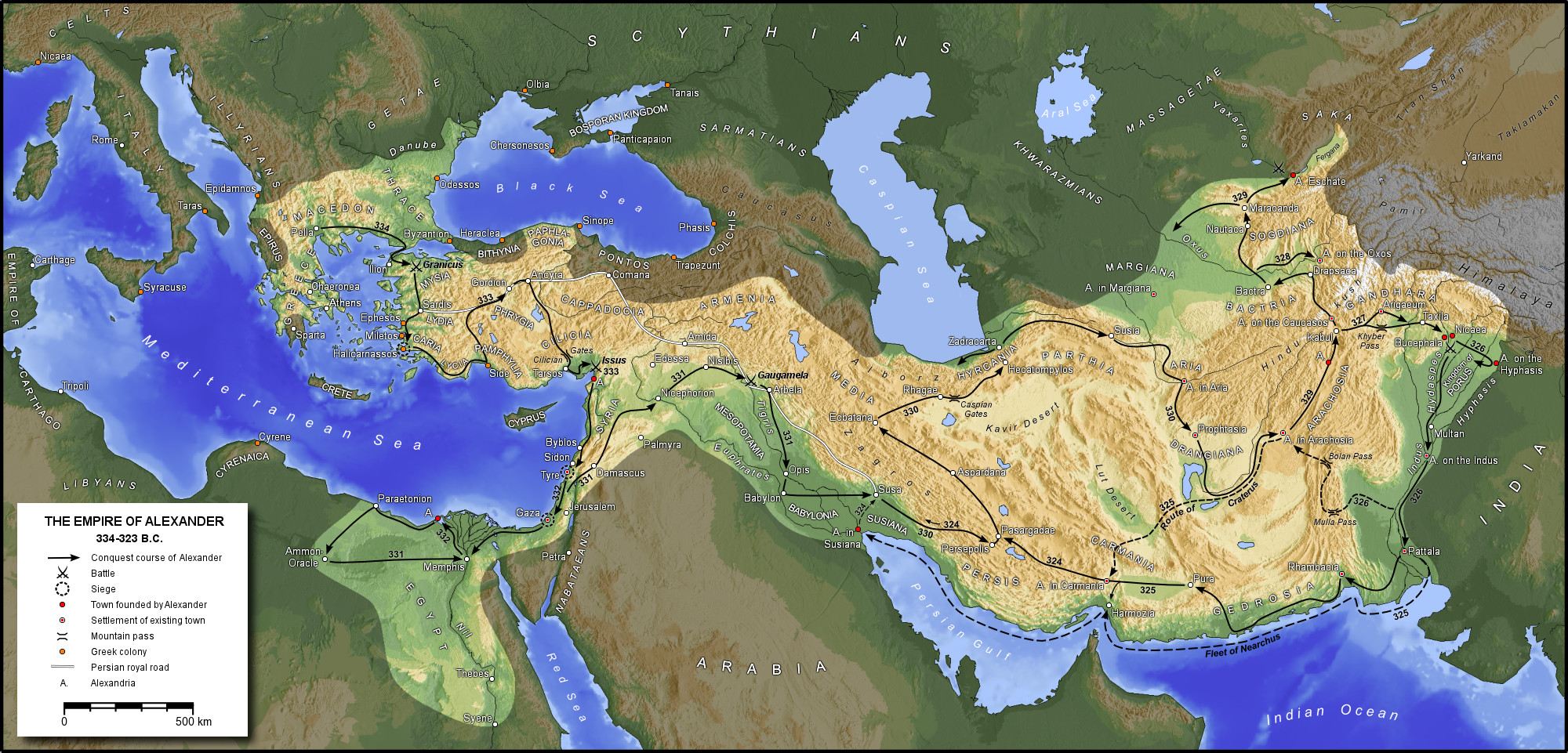Greco-Bactria:Timeline
Jump to navigation
Jump to search
| Greco-Bactria | |||||
| Features | Assets | Timeline | Plan | Notes | Ideas |
Alexander conquers Bactria and Sogdiana in 329 BC. But our starting point of reference is when Cleitus the Black is named satrap (ruler) of Bactria.
Also see Chronology of the expedition of Alexander the Great into Asia on Wikipedia.
- 328 BC - The satrap of Bactria retires, and Alexander the Great decides to give Bactria to Cleitus the Black. Sogdia will also be Cleitus', at the end of the military campaign (TODO: need source).
- 323 BC - 5 years later, Alexander the Great dies. His empire gets divided. Since Cleitus is dead, Bactria and Sogdia go instead to an officer in Alexander's army named Philippos:
- 321 BC - 2 years later, the empire gets re-divided (shuffled around), and now an officer in Alexander's army named Stasanor is appointed to take over the satrapy of Bactria and Sogdia.
- 312 BC - 11 years later, Seleucus conquers Bactria and Sogdia, adding it to his Seleucid Empire. TODO: Need source
- 305 BC - xx years later, Seleucus conquers Bactria from Stasnor (or Stasnor's successor).
- 250 BC - 72 years later, the Bactrian satrap Diodotus rebels from the Seulucid Empire, creating the Greco-Bactrian kingdom.
- 210 BC - 35 years later, the Seleucid Empire tries to take back Bactria. Initially successful at the Battle of the Arius, they ultimately fail as they are unable to conquer the fortified city of Bactra after a 3-year siege.
- 200 BC - 10 years later, the Greco-Bactrian empire expands east into India (creating the Indo-Greek kingdom) and west (coming into conflict with the Parthian empire).
- 162 BC - 38 years later, the Yuezhi (nomadic horsemen) take the northern part of Bactria (likely meaning the area north of the Oxus river) from the Saka, who had briefly defeated the Greco-Bactrians there. The Yuezhi were being driven west by the Xiongnu.
- 140 BC - 22 years later, the Saka (or Scythians) return and take parts of Bactria.
- 125 BC - 15 years later the Yuezhi horde conquers the area, eventually occupying it for more than a century. The Greco-Bactrian ruler retreats to the Kabul valley, abandoning Bactria.

